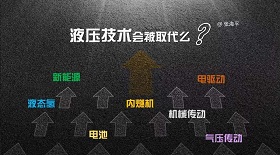The impact of new energy sources
In order to reduce emissions of waste gas and pollution particles PM10 and protect people's health, there is a growing call for the adoption of new energy to replace the internal combustion engine. Many countries around the world have set a timetable to ban the sale of fuel cars. For example, the Netherlands and Norway is in 2025. India is in 2030. Germany is later in 2030, and France and Britain is in 2040. China also released the "road map of energy-saving and new energy vehicle technologies" on Oct 26, 2017.
To provide new energy for mobile devices, there are two main models being tested: pure battery and fuel cell + battery.
Batteries are still cumbersome, and cars can travel hundreds of kilometers in a single charge, with batteries accounting for more than half the car's weight. The energy density of liquid hydrogen is much higher than that of gasoline. Fuel cells can directly convert the chemical energy of fuel (hydrogen or natural gas) into electricity, which can greatly reduce the number of batteries that they carry, and are currently most likely to replace the internal combustion engine at higher power requirements. At present, several international companies have launched prototype vehicles of buses and trucks that use fuel cells and batteries to provide energy.
Compared with cars, many mobile hydraulic devices require much more power and energy consumption, so the technical difficulty of adopting new energy sources is also much higher. But it is believed that with the large-scale application of new energy, new technologies will be constantly produced and the cost will be reduced. So it may be only a matter of time before new energy gradually replaces the internal combustion engine on mobile hydraulic equipment. It brings a big shuffle to the moving hydraulic.



